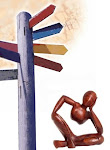My son came home a couple
days ago so excited,
“Daddy! Daddy! I was
picked to paint the shovel at
school!”
To be honest, I had no idea
what he meant, and the
harder I tried to understand
him, the more confused I got.
I couldn’t understand why
painting a shovel was important,
or why only one in his
class was chosen. Finally, I
got my answers.
I help in his classroom every day
for reading excercises, and the
teacher explained that every grade
had one student selected to paint
the “shovel”, and she pointed out
the window. That’s when I saw the
blade of an Altoona city snowplow.
The city is allowing the students
to paint the face of the plow
so that when they see the snow getting
plowed, they’ll have a connection
to helping the city! It suddenly
made sense.
Having the proper understanding
of the situation made me understand
why he was so excited. It
also helped me to realize why it
was such a big deal. Just hearing
different words and seeing a visual
totally changed my perspective.
It got me thinking about how we
don’t understand people of other
denominations or even different
faiths sometimes. Often we are doing
the exact same thing, but using
different words or ceremonies, and
yet we use those things to cause division.
So often we look for how
“they” are different from “us” but
how often do we look for what
makes us similar?
I think it’s time for us to start considering
that just because we don’t
understand something doesn’t make
it wrong. Why not take the time to
learn and understand what’s going
on behind the words. Let’s not assume
we know the what and why,
instead let’s try and understand the
story behind the words.
Take a look at Acts 17 with Paul
preaching on Mars Hill, using a pagan
culture’s ideas, statues, and poems
to reveal Christ. Maybe if we
looked for what makes us similar,
we would have a basis for relationship
in which we could exchange
ideas and help them see God in their
world. Wouldn’t that be interesting.
. .

